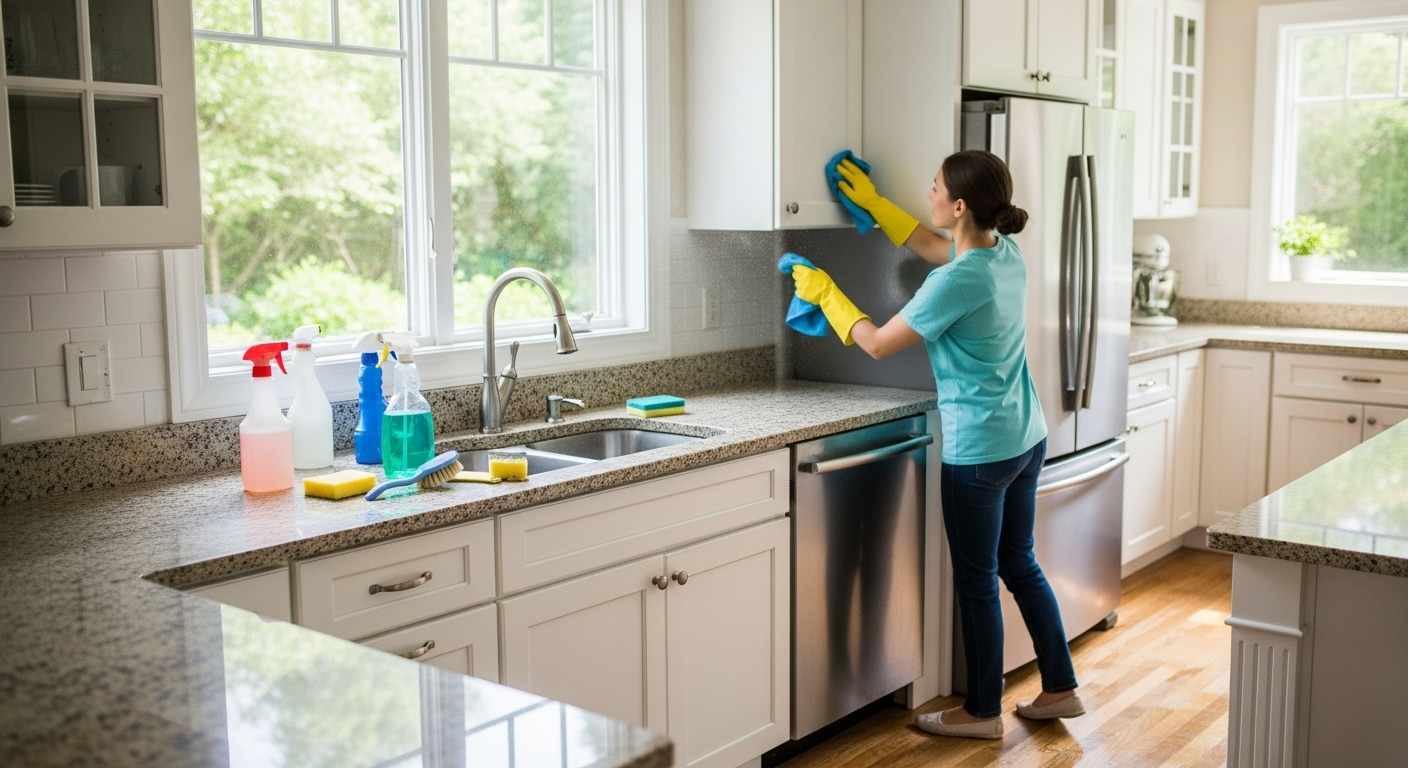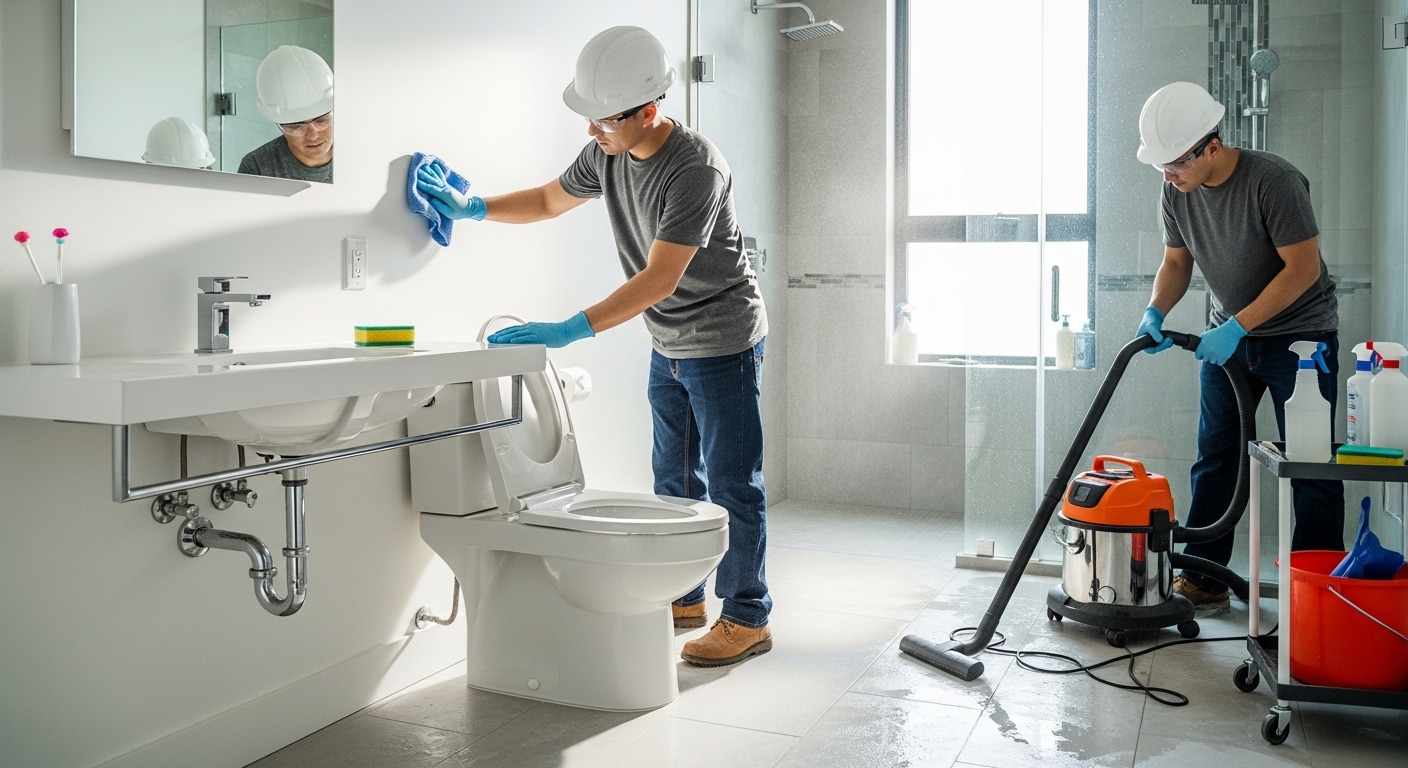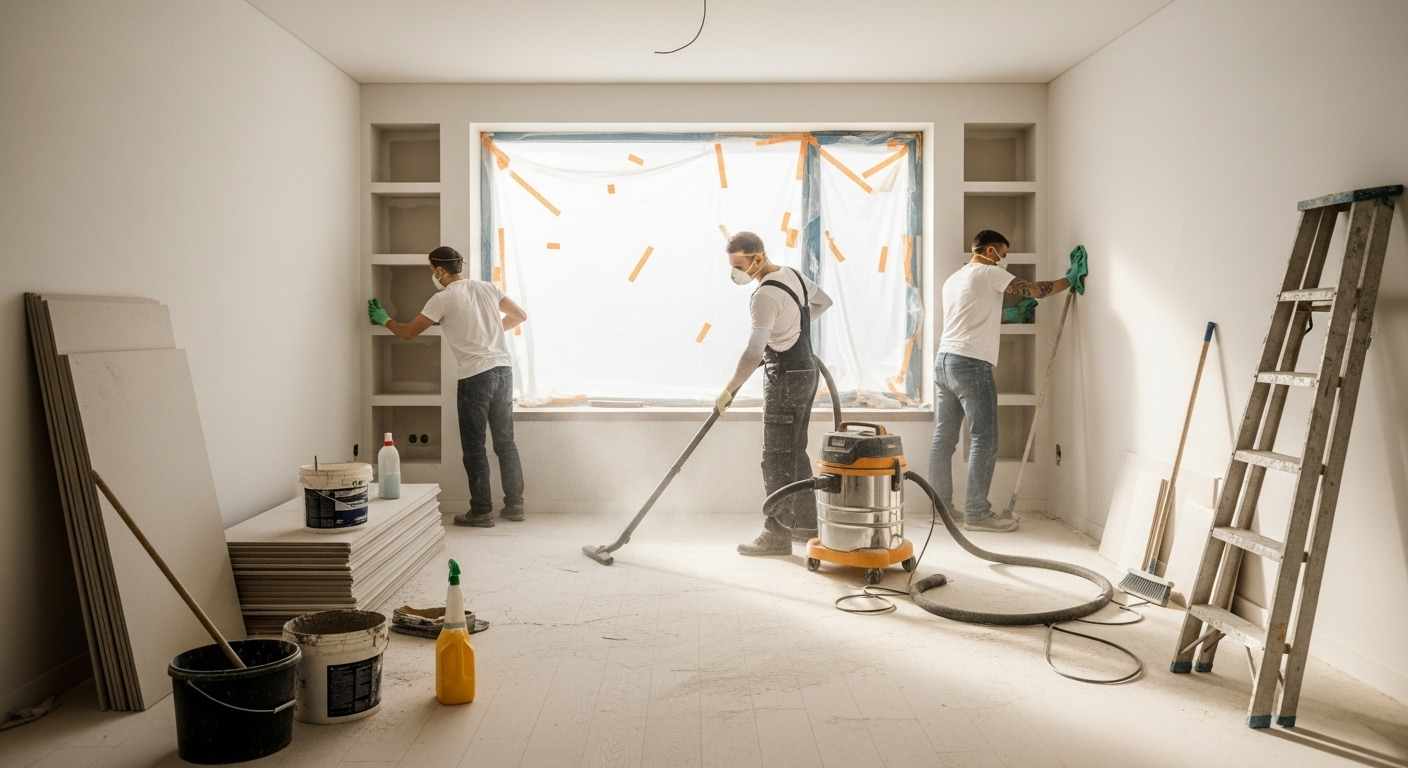Cleaning the interior of a newly built home is one of the most detailed stages in the entire building process. Once the construction team finishes their work, the inside of the home is often left with plaster dust, paint marks, packaging materials, silicone residue, fingerprints, and leftover debris. This is normal, but it means the home cannot be handed over until it goes through a proper cleaning process. Interior post-construction cleaning prepares the property for new occupants by making every room clean, safe, and sanitary.
This guide explains the complete interior cleaning process in clear and simple English. It shows what needs to be done in each room, how dust should be removed, and what steps are important for safety and hygiene. Most importantly, it gives a structured interior cleaning checklist that follows Australian expectations and building standards.
Understanding Interior Construction Cleaning
Interior construction cleaning focuses on removing the traces of building work inside the home. While the building may be structurally complete, the interior is rarely ready for living until every surface has been cleaned. Construction often leaves behind fine dust that settles on shelves, window tracks, tiles, fans, and inside cabinets. Adhesives, paint droplets, and silicone marks may be visible on glass, tiles, and fittings. There are also hidden areas such as cupboard corners, wardrobe shelves, and drawer interiors that collect dust during the building phase.
Interior cleaning ensures that all these areas are addressed. It also helps detect any issues that may need correction before the home is officially handed over, such as marks on walls, scratches, or areas that require touch-ups. The purpose of the clean is to make the home presentable, healthy, and move-in ready.
Why Interior Construction Cleaning Matters
Cleaning inside a new home is not just about appearance. A large amount of construction dust is made of plaster, timber particles, grout residue, and sometimes silica dust from concrete cutting. According to SafeWork Australia, fine dust can affect breathing and health if not removed properly. Dust that settles inside cabinets, tracks, and corners can return into the air when the new occupants move in.
Interior cleaning also protects new materials. Freshly installed fittings, tiles, benchtops, and glass can be damaged if cleaned incorrectly. A proper cleaning process ensures these finishes remain in good condition. Finally, it helps the builder present the home professionally, which is an important part of the handover experience.
General Interior Cleaning Process
The general interior cleaning process begins with removing all loose debris, packaging, and leftover materials from the construction phase. Once the area is free of larger waste, cleaners start by addressing dust from the top of the room downward. High areas such as ceiling corners, air vents, light fittings, and fan blades must be dusted first because dust naturally falls onto lower surfaces. Walls, switches, power outlets, skirting boards, window frames, and doors are then wiped or dusted using microfibre cloths to trap fine particles.
Window tracks are often one of the dustiest areas of a new home. They collect plaster crumbs, dirt, and building residue. Cleaners use brushes and damp cloths to break down the dust, followed by being wiped until the tracks are clean. Window glass must also be washed using glass cloths to remove fingerprints, stickers, and other residue without scratching the surface. Floors are cleaned last because they catch all the falling dust. HEPA vacuums are used to remove fine dust effectively, followed by mopping or steaming depending on the flooring material.
Kitchen Interior Cleaning

The kitchen is one of the most detailed areas during new home cleaning because it has multiple surfaces, tight spaces, and installed fixtures. Cleaners begin by wiping all benchtops to remove plaster dust, paint dots, and construction residue. Corners, splashbacks, and edges must be thoroughly cleaned to prevent dust buildup. Cabinets and drawers need special attention because dust often settles inside them during construction. The interiors are wiped using damp microfibre cloths, and all shelving and hinge areas are cleaned.
The sink and tapware are polished to remove fingerprints, silicone marks, or water spots. If appliances are already installed, their exterior surfaces are cleaned carefully. The cooktop, oven, dishwasher, and exhaust areas are wiped down to eliminate dust and marks without damaging the finishes. The goal is to make the kitchen hygienic, fresh, and ready for use.
Bathroom Interior Cleaning

Bathrooms collect a surprising amount of construction dust, especially on tiles, grout lines, shower screens, and fixtures. The cleaning process starts with wiping wall tiles and removing grout haze left from installation. Shower screens require glass-safe cleaning tools to avoid scratches, and all stickers must be removed using plastic scrapers. Tapware, shower heads, and steel fixtures are polished to remove fingerprints, marks, or water residue.
The vanity area is cleaned inside and outside. Drawers and cabinets often hide dust and need careful wiping. Mirrors must be cleaned without streaks. Toilets must be cleaned thoroughly both inside and around the base. Bathroom floors are then vacuumed and mopped to remove dust, plaster, and adhesive residue.
Bedroom Interior Cleaning

Bedroom cleaning focuses on dust removal and surface preparation. Wardrobes and cupboards are cleaned inside and out, including shelves, rails, sliding tracks, and drawer interiors. Window areas require extra attention since dust easily settles inside tracks and corners. Floors are vacuumed using a HEPA vacuum to remove dust from carpets or hard flooring. Any paint marks or adhesive spots on the flooring are cleaned using safe methods. Bedrooms must be left dust-free and fresh for move-in.
Living Areas and Common Spaces
Living rooms and hallways usually have larger open spaces, which means dust settles widely across surfaces. Walls, skirting boards, and trims are wiped carefully. Air vents, fans, and light fittings are dusted because these areas often trap plaster dust. Glass doors leading to balconies or patios must be cleaned on both sides, and their tracks thoroughly wiped.
Floors in large living areas require detailed cleaning because they collect dust from all parts of the home. HEPA vacuums help remove fine dust from corners, and mops leave the floor clean and streak-free. The entire area is inspected afterward to ensure no debris or marks remain.
Laundry Cleaning
The laundry room may appear simpler, but it also collects a considerable amount of dust. The laundry tub is scrubbed to remove paint or plaster residue, and tapware is cleaned until spotless. Cabinetry and shelving are wiped from top to bottom. If there is a splashback, it is cleaned to remove dust and adhesive marks. The floor is vacuumed and mopped, ensuring no dust remains around plumbing areas.
Staircase Cleaning
If the home has stairs, cleaners wipe all handrails, risers, treads, and corners where dust collects. Stair edges must be checked for debris or sharp items left behind. Vacuuming is done carefully to reach tight spaces between each step. This helps make the staircase safe and visually clean.
Final Touch-Up Cleaning
The final touch-up clean is the stage where cleaners walk through the home and recheck the areas that might still show dust or fingerprints. High-touch surfaces like door handles, switches, glass doors, and benchtops are wiped again. Floors may require a second vacuum or mop depending on dust level. Stainless steel fixtures are polished to remove streaks. Cleaners also inspect corners, ledges, and window frames to ensure nothing has been missed. This step ensures the home is completely ready for the new owners.
Interior Cleaning Safety Tips
Interior construction cleaning must be completed with safety in mind. Cleaners should wear PPE such as gloves, masks, and goggles when dealing with dust or chemicals. Ventilation is important, so windows and doors should be opened to improve airflow. Metal scrapers should be avoided on glass to prevent scratches; only plastic scrapers or safe solvents should be used. Ladders should be placed securely on flat surfaces, and the three-point contact rule must be followed. All chemicals should be used according to their instructions, and cleaners must ensure they never mix products like bleach and ammonia. Before cleaning begins, the site should be checked for loose screws, nails, or sharp debris that can cause injury.
Benefits of Following an Interior Cleaning Checklist
Using a structured interior cleaning checklist helps ensure nothing is missed during the cleaning process. It creates a logical order for completing each task and helps control dust effectively. Checklists protect delicate surfaces from damage by ensuring the right tools and products are used. They help cleaners work more efficiently and speed up the final handover. Most importantly, a thorough checklist ensures the home is genuinely ready for the new occupants.
FAQS
What should I clean first inside a new home?
Start with high areas like ceilings and vents before cleaning walls, surfaces, and floors.
Do I need a HEPA vacuum for new home dust?
Yes. Fine plaster and construction dust require a HEPA vacuum for proper removal.
How do I remove stickers from new windows?
Use warm water and a plastic scraper to avoid scratching the glass.
Should I clean bathrooms or kitchens first?
The order does not matter, but both need detailed cleaning.
Are cleaning chemicals safe in a new home?
Yes, if used correctly and with ventilation.
What area is hardest to clean after construction?
Window tracks and corners often collect the heaviest dust.
Can I sweep construction dust with a broom?
No. Sweeping spreads dust. A HEPA vacuum is better.
How many cleaning stages are needed?
Rough clean, detailed clean, and final touch-up.
Should cabinets be cleaned inside?
Yes. Dust settles inside drawers and cupboards during construction.
How long does interior cleaning take?
Most homes require several hours to a full day depending on size and dust level.
